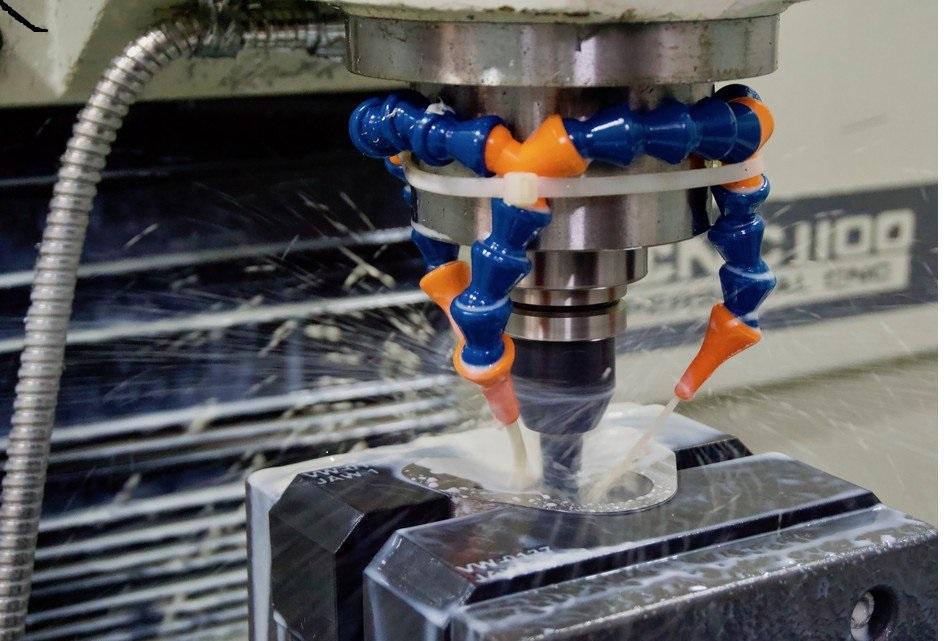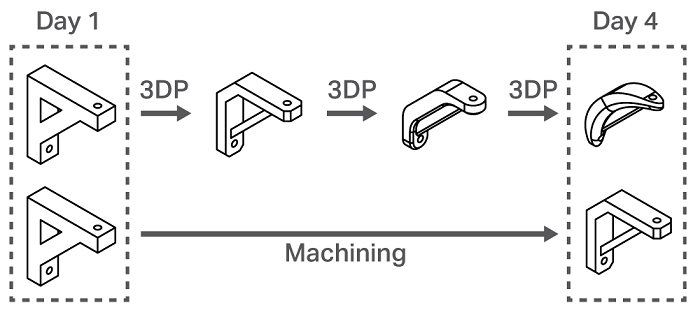Senior Content Engineer
- FMA
- The Fabricator
- FABTECH
- Canadian Metalworking
Our Publications
Categories
- Additive Manufacturing
- Aluminum Welding
- Arc Welding
- Assembly and Joining
- Automation and Robotics
- Bending and Forming
- Consumables
- Cutting and Weld Prep
- Electric Vehicles
- En Español
- Finishing
- Hydroforming
- Laser Cutting
- Laser Welding
- Machining
- Manufacturing Software
- Materials Handling
- Metals/Materials
- Oxyfuel Cutting
- Plasma Cutting
- Power Tools
- Punching and Other Holemaking
- Roll Forming
- Safety
- Sawing
- Shearing
- Shop Management
- Testing and Measuring
- Tube and Pipe Fabrication
- Tube and Pipe Production
- Waterjet Cutting
Industry Directory
Webcasts
Podcasts
FAB 40
Advertise
Subscribe
Account Login
Search
Better designs yield better products
Design for manufacturing shortens the product development cycle
- By Alex Crease
- November 27, 2018

Using AM to produce fixtures can speed workflow. Shown is a bearing housing held by 3D-printed soft jaws.
The following text is an edited excerpt from a blog posted on the Markforged website.─Ed.
Design for manufacturing (DFM) involves optimizing the design of your product for a specific manufacturing process. Employing DFM tactics reduces the cost and difficulty of producing a product while maintaining its quality.
Standardization cuts costs by reducing inventory and scale-up needs. Here are some ways to think about part standardization:
- Design parts that can be used in more than one product line.
- Standardize hardware used for your products to reduce inventory needs.
- Make your designs modular to simplify product changes or redesigns.
- Use standard components instead of custom-made ones when you can.
Simplifying your design cuts down on the time and inventory needed to make your product, which correlates to its cost. To simplify your product, you can:
- Minimize assembly steps and inventory by making multi-functional parts.
- Use designed-in alignment or quick-securing methods like snap fits. Fastening techniques like bolting or gluing take longer to secure and require carrying more inventory.
- Test your improved designs quickly with 3D-printed prototypes.

Compared to machining, 3D printing allows more design iterations to be tested earlier and more often.
Errors in alignment can damage parts or equipment, reducing yield or even causing a line to be shut down. Tweak your designs to account for slop, misalignment, and tolerance stack-up error.
The place to start when adopting DFM is to open the lines of communication with those who manufacture the products. Iteration in product design goes both ways. Work with the people on the factory floor to iterate and improve upon your design, because they’ve often experienced many of the potential production problems first-hand!
Then ask, “What manufacturing method would be most cost-effective for production?” Additive, subtractive, or forming? Well-designed parts should be optimized for their manufacturing process. Analyzing the process by which each part is made can lead to simpler setups and operations to reduce part cost.
The key value of additive manufacturing with respect to DFM lies in the rapid iterations and improvements to design that it allows. AM increases your productivity by reducing the time and cost to get a part made, whether it’s a prototype, tool, or the final part.
Click here to read the blog in its entirety.About the Author
About the Publication
- Podcasting
- Podcast:
- The Fabricator Podcast
- Published:
- 04/16/2024
- Running Time:
- 63:29
In this episode of The Fabricator Podcast, Caleb Chamberlain, co-founder and CEO of OSH Cut, discusses his company’s...
- Trending Articles
- Industry Events
16th Annual Safety Conference
- April 30 - May 1, 2024
- Elgin,
Pipe and Tube Conference
- May 21 - 22, 2024
- Omaha, NE
World-Class Roll Forming Workshop
- June 5 - 6, 2024
- Louisville, KY
Advanced Laser Application Workshop
- June 25 - 27, 2024
- Novi, MI



























